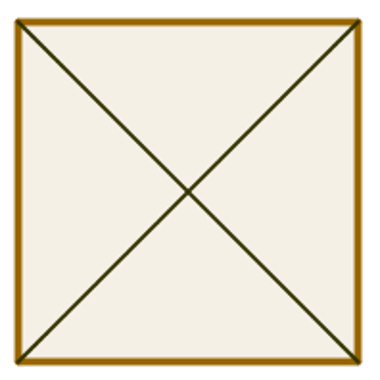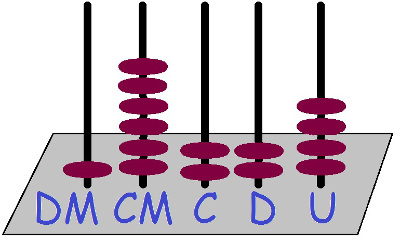Perfect square trinomial is the 3rd case of algebraic expression factorization. It can only be used when the algebraic expression is a trinomial (polynomial with three monomials) and this trinomial forms a perfect square.
what is trinomial
Trinomial is a polynomial that has three monomials without similar terms, see examples:
3x2 + 2x + 1
20x3 + 5x - 2x2
2ab +5b + 3c
Not all of the above trinomials can be factored out using the perfect square.
what is perfect square
To better understand what perfect square is, see:
Can we consider a number to be a perfect square? Yes, it is enough that this number is the result of another number squared, for example: 25 is a perfect square, because 52 = 25.
Now we should apply this to an algebraic expression, look at the square below with sides x + y, the value of that side is an algebraic expression.
To calculate the area of this square we can follow two different ways:
1st way: the formula for calculating the square area is A = Side2, so since the side in this square is x + y, just square it.
THE1 = (x + y)2
The result of this area A1 = (x + y)2 it's a perfect square.
2nd way: this square was divided into four rectangles where each one has its own area, so the sum of all these areas is the total area of the largest square, thus:
THE2 = x2 + xy + xy + y2, as xy and xy are similar we can add them
THE2 = x2 +2xy + y2
The result of area A2 = x2 +2xy + y2 is a trinomial.
The two areas found represent the area of the same square, so:
THE1 = A2
(x + y)2 = x2 +2xy + y2
So the trinomial x2 +2xy + y2 have as perfect square (x + y)2.
When we have an algebraic expression and it is a trinomial of the perfect square, its factored form is represented as a perfect square, see:
the trinomial x2 +2xy + y2 factored is (x + y)2.
How to identify a perfect square trinomial
As already stated, not every trinomial can be represented in the form of a perfect square. Now, when a trinomial is given how are we going to identify that it is a perfect square or not?
For a trinomial to be a perfect square, it must have some characteristics:
• Two terms (monomies) of the trinomial must be square.
• One term (monomium) of the trinomial must be twice the square roots of the other two terms.
See an example:
See if the 16x trinomial2 + 8x + 1 is a perfect square, so follow the rules above:
Do not stop now... There's more after the advertising ;)
Two members of the trinomial have square roots and double them is the middle term, so the 16x trinomial2 + 8x + 1 is perfect square.
So the factored form of the trinomial is 16x2 + 8x + 1 is (4x + 1)2, as it is the sum of the squared roots.
See some examples:
Example 1:
Given the trinomial m2 – m n + n2, we must root out the terms m2 and not2, the roots will be m and n, twice these roots will be 2. m. n which is different from the m term n (middle terms), so this trinomial is not a perfect square.
Example 2:
Given the 4x trinomial2 – 8xy + y2, we must take the roots of the terms 4x2 and y2, the roots will be respectively 2x and y. Double these roots must be 2. 2x. y = 4xy, which is different from the 8xy term, so this trinomial cannot be factored using the perfect square.
Example 3:
Given the 1 + 9th trinomial2 – 6th.
We must, before using the rules of the perfect square, place the trinomial in ascending order of exponents, thus:
9th2 – 6th + 1.
Now, we take the root of the terms 9a2 and 1, which will be respectively 3a and 1. Double these roots will be 2. 3rd. 1 = 6a, which is equal to the middle term (6a), so we conclude that the trinomial is perfect square and its factored form is (3a – 1)2.
by Danielle de Miranda
Graduated in Methematics
Would you like to reference this text in a school or academic work? Look:
RAMOS, Danielle de Miranda. "Trinomial of the Perfect Square"; Brazil School. Available in: https://brasilescola.uol.com.br/matematica/trinomio-quadrado-perfeito.htm. Accessed on June 28, 2021.



